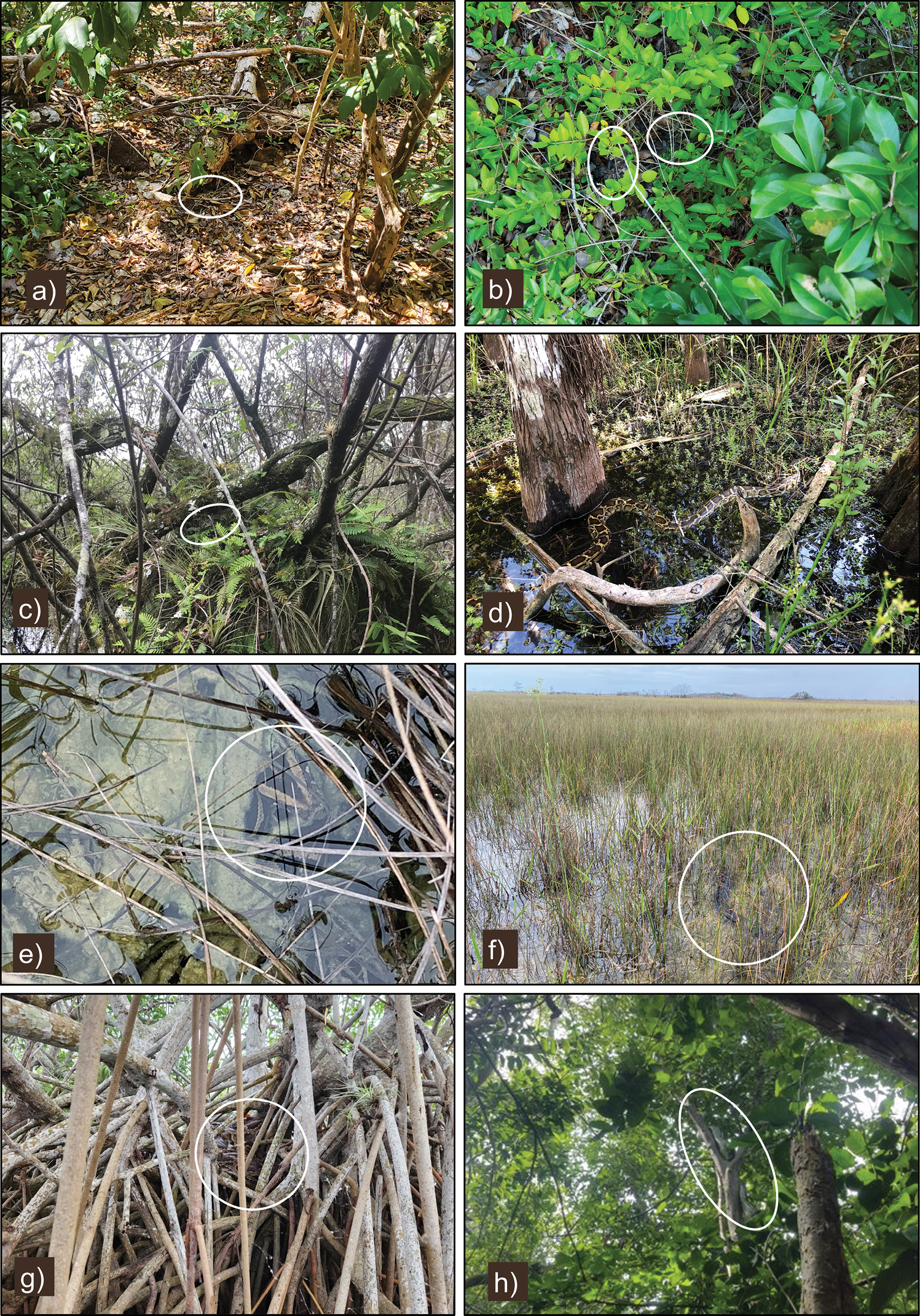| |
| |

|
|
| |
Examples of cryptic coloration contributing to low detection probability in representative habitat where Burmese pythons (Python molurus bivittatus) have been captured. White circles indicate pythons. Photographs illustrate python crypsis in hammocks (a–c), shrubs, mangroves, trees, (c, g, h) and cypress domes and wet prairies (d, e, f). Photo credits: Crocodile Lake National Wildlife Refuge (a, b, h) and U.S. Geological Survey (c–g).
|
|
|
|
| |
Part of: Guzy JC, Falk BG, Smith BJ, Willson JD, Reed RN, Aumen NG, Avery ML, Bartoszek IA, Campbell E, Cherkiss MS, Claunch NM, Currylow AF, Dean T, Dixon J, Engeman R, Funck S, Gibble R, Hengstebeck KC, Humphrey JS, Hunter ME, Josimovich JM, Ketterlin J, Kirkland M, Mazzotti FJ, McCleery R, Miller MA, McCollister M, Parker MR, Pittman SE, Rochford M, Romagosa C, Roybal A, Snow RW, Spencer MM, Waddle JH, Yackel Adams AA, Hart KM (2023) Burmese pythons in Florida: A synthesis of biology, impacts, and management tools. NeoBiota 80: 1-119. https://doi.org/10.3897/neobiota.80.90439
|
|
